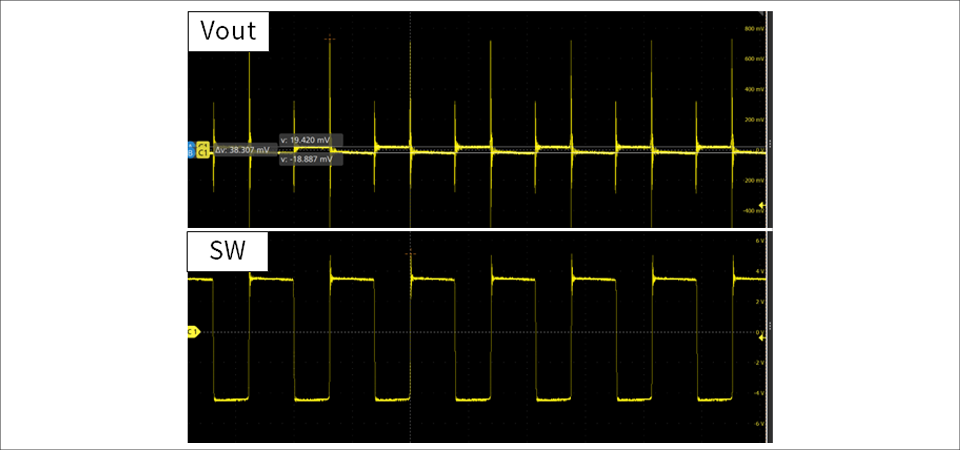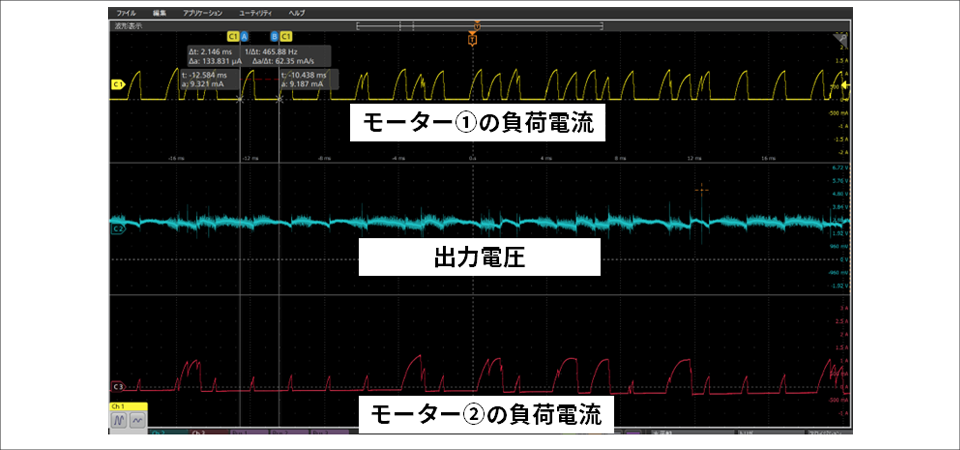Hello. I'm Tonpa, a new FAE.
I joined Macnica as a new graduate and learned about circuit design and implementation while experiencing manufacturing through production training. When I was a student, I majored in organic chemistry, and since I started with no knowledge of electricity and electronics, I often struggled.
Therefore, in this article, I will introduce what I learned about circuit design and implementation while experiencing manufacturing through manufacturing training. Last time, we introduced the implementation of DC/DC converters, and this time we will introduce the evaluation of DC/DC converters.
oscilloscope
Before introducing DC/DC converter evaluation, let's start with a brief introduction to oscilloscopes.
Figure 1: Oscilloscope
An oscilloscope is a device that can detect time changes in electrical signals as waveforms, and is an essential item when evaluating power supplies. Oscilloscopes are necessary for such evaluations, and can be used to perform a variety of measurements.
■Main purpose of use in power supply evaluation:
・Measurement of output voltage size
・Measurement of output voltage noise
・Frequency/period measurement
・Measurement of rising waveform of output voltage
・Measurement of transient response characteristics
As mentioned above, there are many evaluations that can be made, but in this article I will introduce the measurements that I actually conducted.
Checking the output voltage
The first thing we did was to check whether the desired voltage was being output.
I implemented three types of feedback resistors in the DC/DC converter and designed it to be able to output three types of voltage using a switch, but am I able to output it successfully? . .

We were able to confirm that the voltage exactly as expected was being output! Being able to see this waveform was probably the happiest moment during the training.
Next, I moved on to checking the noise, but at first I wasn't able to check the ripple waveform well. The reason for this is that DC measurements were also performed when measuring noise, and the waveform could not be enlarged properly. When evaluating noise, it is necessary to look at the waveform in more detail, and I learned that it is better to measure with AC settings for that purpose. The AC setting allows you to accurately observe how the center of the waveform changes relative to the horizontal 0V axis, making it suitable for noise evaluation.
Figure 3 shows the actual measurement results.

The upper waveform shows the output voltage waveform, and the lower waveform shows the switching waveform. Ripple voltage and sharp and large spike noise were confirmed in the output voltage waveform. This spike noise is said to occur mainly when switches open and close.
In order to confirm whether the noise was really caused by switching, we observed it along with the switching waveform and confirmed that the noise was occurring at the timing when the switch turned on and off. In my case, the noise this time was within the allowable range of the subsequent IC, so there was no problem, but in order to reduce high-frequency spike noise, measures such as adding an LC filter or ferrite beads to the load position were recommended. there is.
Through this measurement, I learned that settings such as AC settings are needed to suit the application, and that checking multiple waveforms at the same time allows for a better understanding of device behavior.
Checking the load current
With an oscilloscope, you can check not only voltage waveforms but also current waveforms.
As I introduced in the article "2nd DC/DC Converter Selection," I misjudged the motor load and selected a DC/DC converter, and the motor did not drive as expected. Thanks to the oscilloscope, we were able to find the cause.

Initially, I assumed that the load would be about 600mA, but when I actually measured it, I realized that it was drawing more than 1A. Also, the reason why the current waveform rises sparsely is probably due to insufficient power being supplied from the power supply.
From this experience, I learned that by using an oscilloscope, it is possible to analyze failures.
Summary
This time, we introduced the evaluation of DC/DC converters using an oscilloscope. By actually evaluating the device, I learned how the device works and the need for configuration methods that are appropriate for the purpose of evaluation. I also gained experience using an oscilloscope to find the cause of operational problems.
Finally, the next episode is the final episode. looking forward to.
The path to my first circuit design Article list
・ DC/DC converter board design
・ Implementation of DC/DC converter
・DC/DC converter evaluation
・ Bonus
